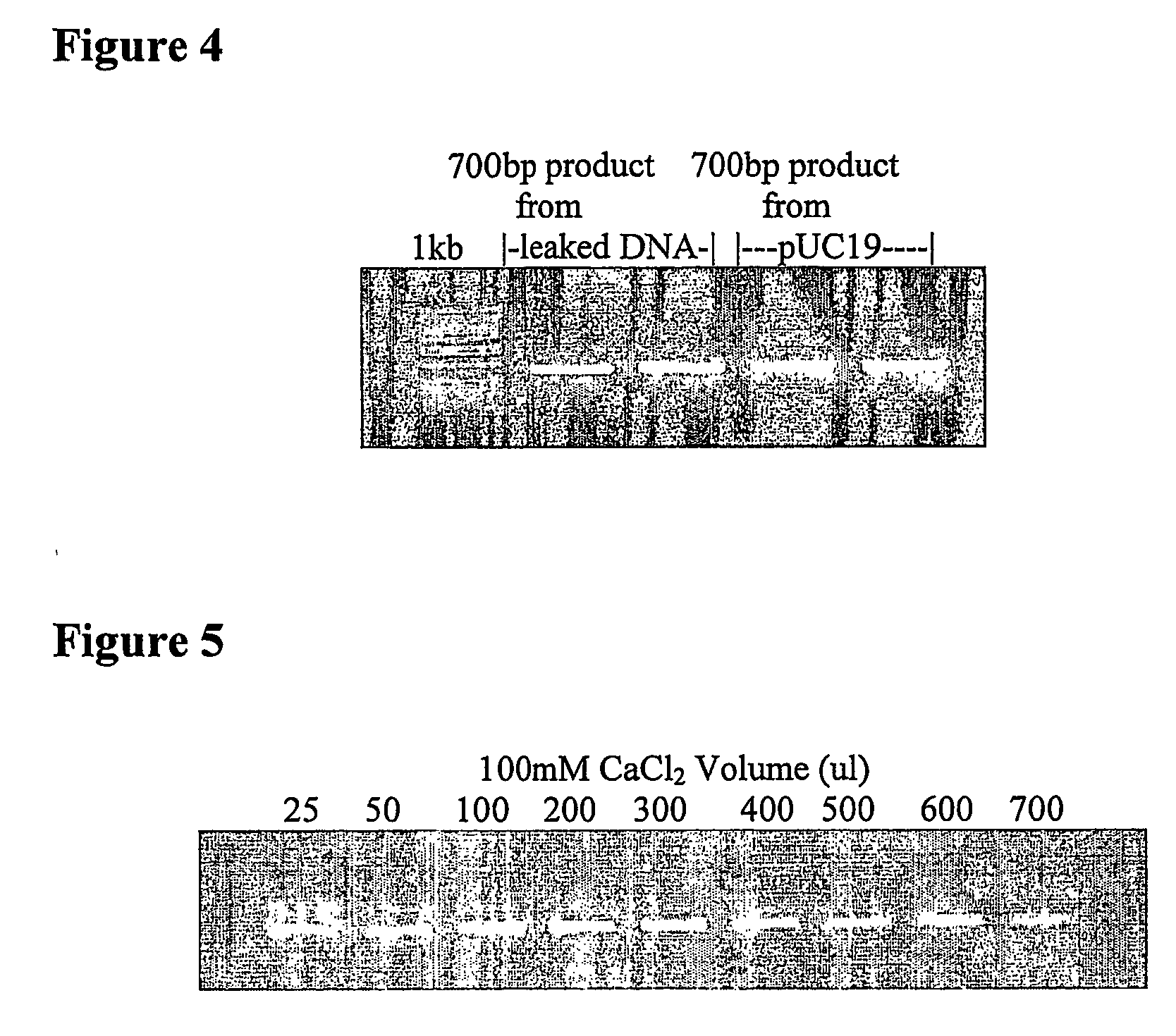Extraction of nucleic acid
a nucleic acid and nucleic acid technology, applied in the field of nucleic acid purification, can solve the problems of cellular material making further purification difficult, difficult and time-consuming, and interfere with downstream analysis or functionality
- Summary
- Abstract
- Description
- Claims
- Application Information
AI Technical Summary
Benefits of technology
Problems solved by technology
Method used
Image
Examples
example 2
[0043] An overnight 5 ml culture of XL-1 Blue containing pUC19 plasmid was centrifuged to pellet the cells which were then resuspended in 500 μl of 10 mM Tris. HCl, 10 mM EDTA pH 8.5. Following a 5 minute incubation, the cells were centrifuged leaving a clear supernatant containing the plasmid. A sample was taken for PCR analysis and the remaining plasmid was purified by adjusting the pH to 4 with 166 μl of a 1.6M potassium acetate buffer and then adding 1 mg of magnetic beads derivatised with positively charged groups. The magnetic beads were incubated for 1 minute to bind the plasmid, separated on a magnet, washed twice with water and the DNA recovered by eluting with 100 ul of 10 mM Tris.HCl pH 8.5. Plasmid purity was confirmed by gel electrophoresis and identity confirmed by PCR and sequencing.
example 3
[0044] An overnight 5 ml culture of XL-1 Blue containing pUC19 plasmid was centrifuged to pellet the cells which were then resuspended in 500 μl of water. Following a 5 minute incubation, the cells were centrifuged leaving a clear supernatant containing the plasmid. Plasmid purity was confirmed by gel electrophoresis and identity confirmed by PCR.
example 4
[0045] An overnight 5 ml culture of XL-1 Blue containing pUC19 plasmid was centrifuged to pellet the cells which were then resuspended in 500 μl of 0.15M NaCl. Following a 5 minute incubation, the cells were centrifuged leaving a clear supernatant containing the plasmid. Plasmid purity was confirmed by gel electrophoresis and identity confirmed by PCR.
PUM
| Property | Measurement | Unit |
|---|---|---|
| temperature | aaaaa | aaaaa |
| temperature | aaaaa | aaaaa |
| pH | aaaaa | aaaaa |
Abstract
Description
Claims
Application Information
 Login to View More
Login to View More - R&D
- Intellectual Property
- Life Sciences
- Materials
- Tech Scout
- Unparalleled Data Quality
- Higher Quality Content
- 60% Fewer Hallucinations
Browse by: Latest US Patents, China's latest patents, Technical Efficacy Thesaurus, Application Domain, Technology Topic, Popular Technical Reports.
© 2025 PatSnap. All rights reserved.Legal|Privacy policy|Modern Slavery Act Transparency Statement|Sitemap|About US| Contact US: help@patsnap.com


